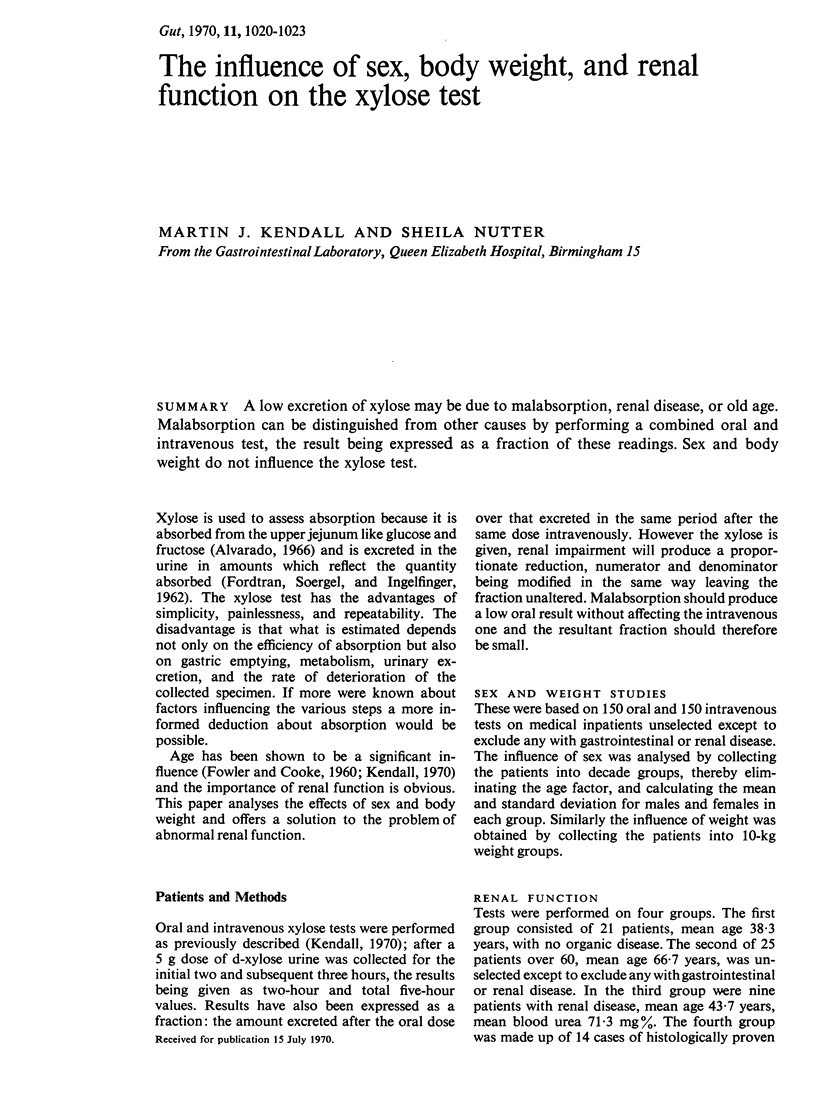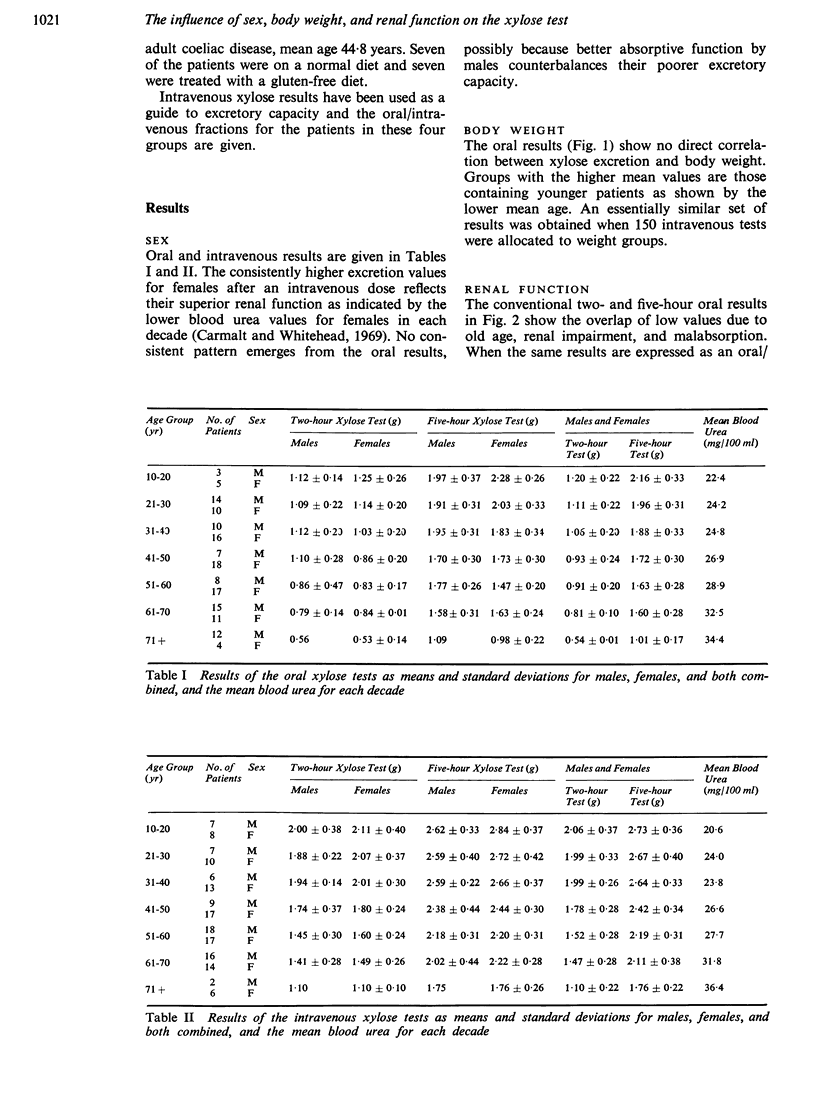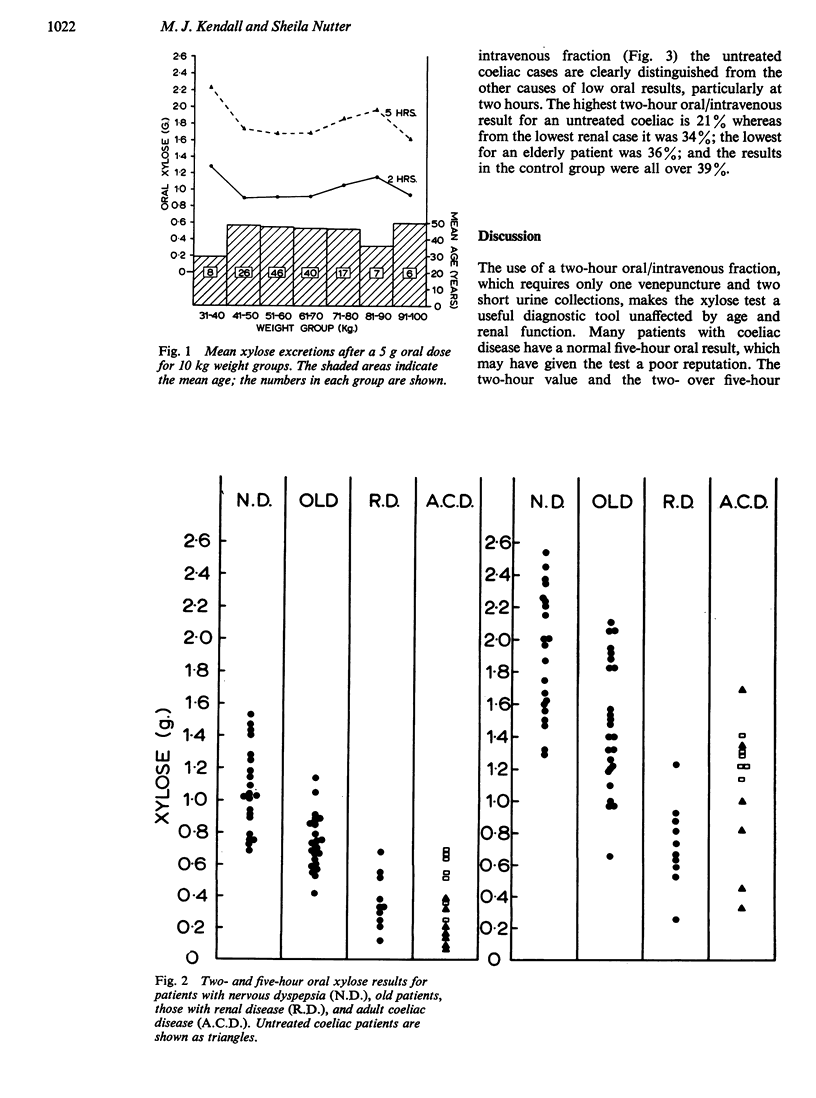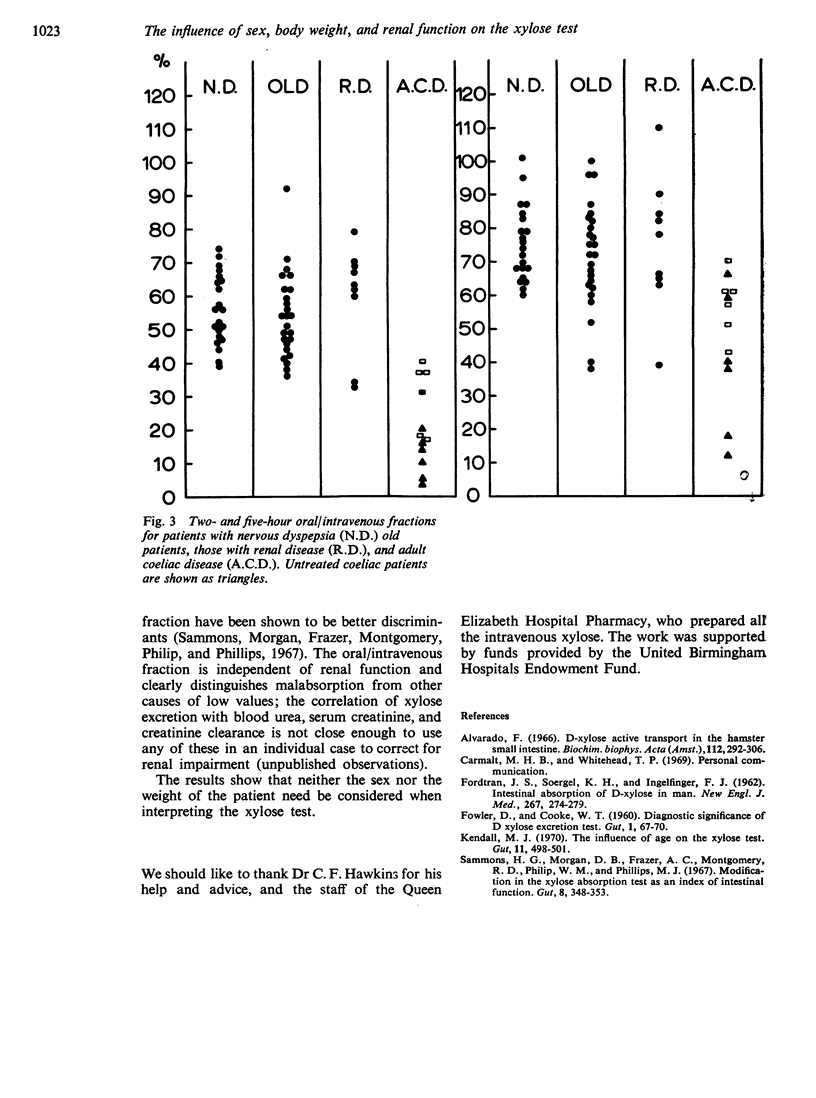Abstract
A low excretion of xylose may be due to malabsorption, renal disease, or old age. Malabsorption can be distinguished from other causes by performing a combined oral and intravenous test, the result being expressed as a fraction of these readings. Sex and body weight do not influence the xylose test.
Full text
PDF



Selected References
These references are in PubMed. This may not be the complete list of references from this article.
- Alvarado F. D-xylose active transport in the hamster small intestine. Biochim Biophys Acta. 1966 Feb 7;112(2):292–306. doi: 10.1016/0926-6585(66)90328-1. [DOI] [PubMed] [Google Scholar]
- FORDTRAN J. S., SOERGEL K. H., INGELFINGER F. J. Intestinal absorption of D-xylose in man. N Engl J Med. 1962 Aug 9;267:274–279. doi: 10.1056/NEJM196208092670602. [DOI] [PubMed] [Google Scholar]
- FOWLER D., COOKE W. T. Diagnostic significance of d-xylose excretion test. Gut. 1960 Mar;1:67–70. doi: 10.1136/gut.1.1.67. [DOI] [PMC free article] [PubMed] [Google Scholar]
- Kendall M. J. The influence of age on the xylose absorption test. Gut. 1970 Jun;11(6):498–501. doi: 10.1136/gut.11.6.498. [DOI] [PMC free article] [PubMed] [Google Scholar]
- Sammons H. G., Morgan D. B., Frazer A. C., Montgomery R. D., Philip W. M., Phillips M. J. Modification in the xylose absorption test as an index of intestinal function. Gut. 1967 Aug;8(4):348–353. doi: 10.1136/gut.8.4.348. [DOI] [PMC free article] [PubMed] [Google Scholar]


